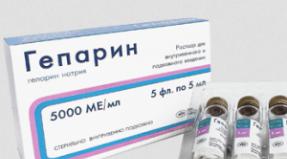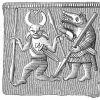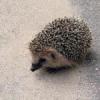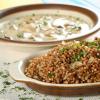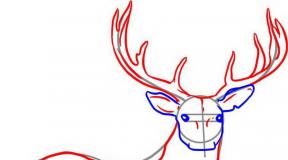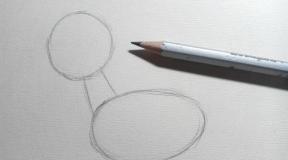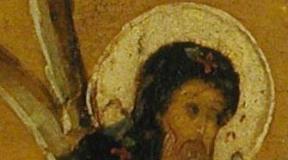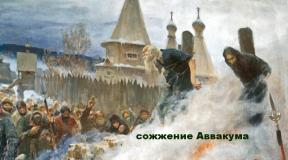The dog ate rat poison - what to do. My dog swallowed an insect. Is this a problem? How is the toxic effect of naphthylthiocarbamide manifested?
Poisonous preparations for the destruction of rodents have a pungent smell, so baits are produced. Rats are attracted to grain baits, of little interest to dogs. But a curious pet can accidentally swallow a rat bait with poison.
Also, poisoning provokes hunting instincts, some breeds of dogs can catch and eat a rodent, thereby receiving a dose of poison. How do you know what the dog ate rat poison , and how to help your pet, read on.
The new generation rat poison bait does not contain arsenic, lead or strychnine. But modern rodent toxicants are not completely safe for pets (in this case, dogs).
Modern manufacturers offer four types of bait, these are:
- anticoagulants of the first, second generation;
- naphthylthiocarbamide;
- zinc phosphide.
All poisonous drugs are divided into two groups:
- the former act sharply, causing instant death. The variant is ineffective against rats. Rodents are very smart, and if one animal dies after trying the bait, the others will not eat it;
- baits with toxic substances of the second group have a subacute or chronic effect. Poisoning symptoms appear some time after swallowing.
The first generation of anticoagulants
The group includes warfarin, triphenacin, ethylfanacin. They are often used in the production of poisonous baits approved for domestic use.
Once in the body, the poisonous substance leads to a deterioration in normal blood clotting. The disadvantage of this group is the rodents' quick addiction, so the baits quickly lose their effectiveness.
Second generation anticoagulants
The group includes:
- bromadiolone;
- flocumarene;
- brodiafacum.
The action of the listed substances is similar, they disrupt blood clotting. The difference from the first group is the delay in the body, the toxic substances have a cumulative effect. Second generation drugs are more effective. The popular Rat Death bait is produced on the basis of second generation anticoagulants.
Naphthylthiocarbamide
The toxic agent naphthylthiocarbamide is marketed under the name Krysid. It is highly toxic. When ingested, it causes convulsions, pulmonary edema, death. It is applied in the form of a dry grain bait or gel.
Zinc phosphide
Zinc phosphide baits are classified as highly toxic. Designed for professionals, they are not available in conventional hardware stores. Zinc phosphide destroys the stomach of rodents.
Signs of toxicity (symptoms)
Let's see how rat poison works on dogs. Reaction depends on the dose that the dog received, as well as on the type of poisonous bait. So, the effect of rat poison on a dog can appear immediately after use if the dog has swallowed a rat or zinc phosphide, or after 3-5 days if a toxic substance from the group of anticoagulants has entered the animal's body.
Puppies are at risk. Kids are curious, they often "try" different things. The puppy's body is more vulnerable to toxic substances.
How is poisoning with anticoagulant baits manifested?
Characteristic signs of dog poisoning with rat poison containing anticoagulants:
- the first sign is the discharge of blood from the nostrils;
- dark, liquid stools are a sign of internal bleeding;
- reddish urine indicates toxic kidney damage;
- cough with pink foam is a sign of intrapulmonary bleeding;
- loss of consciousness, paralysis speak of cerebral hemorrhage.
In a small dose rat poison for dogs less dangerous, signs of poisoning are erased and uncharacteristic. Anticoagulants of the first group are released naturally rather quickly, the degree of damage depends on the dose received.
Vafaren is the most dangerous for a dog, lethal dose this drug is only 6 mg per kilo of dog weight. Ethylphenacin is less dangerous, with a lethal dose of more than 7000 mg / kg.
How is Rat Death Poisoning manifested?
One of the most popular anti-rodent drugs is sold under the name Rat Death 1, action on dogs this tool is similar to that described above. But the consequences of poisoning are more serious, since anticoagulants accumulate in the organs. The lethal dose of brodifacoum for a dog is 3.3 mg / kg.
How is the toxic effect of naphthylthiocarbamide manifested?
Bait with naphthylthiocarbamide causes a strong rat poisoning in dogs, symptoms begin to appear soon after ingestion of the bait. The owners should be alerted:
- profuse vomiting;
- tachycardia;
- shortness of breath, convulsive cough indicate the onset of pulmonary edema;
- cessation of urine waste - symptoms of kidney failure.
Zinc phosphide toxicity
Poisoning of a dog with rat poison is manifested as follows:
- the dog drinks a lot, eagerly, refuses to eat;
- general weakness;
- indigestion;
- convulsive twitching of the paws;
- fainting.
Treatment
Inexperienced owners do not know what to do if the dog has eaten rat poison. It is necessary to provide the pet with urgent help and be sure to take it to the veterinary clinic for treatment.

How to help?
When a dog swallows a poison from a group of substances that affect blood clotting, the prognosis is favorable if the owners take timely necessary measures... Let's say the owner saw that the dog ate the "Rat Death", what to do in this case?
Necessary:
- as quickly as possible to carry out gastric lavage using a solution of potassium permanganate with a low concentration;
- give the dog any sorbent to drink, for example, crushed activated carbon tablets mixed with water. The number of tablets is determined by the weight of the dog (1 piece for every 10 kilos);
- prepare a decoction of flax seed, rice, oatmeal, water a sick dog, these decoctions have an enveloping effect, protecting the mucous membrane of the digestive tract,
If several hours have passed since the bait was swallowed, it makes no sense to rinse the stomach, the poisonous substances have already passed into the intestines. It is strictly forbidden to flush when signs of damage to the central nervous system appear - convulsive twitching of the paws, impaired coordination.
Antidotes, therapeutic measures
Appointment drugs a poisoned dog is being conducted by a veterinarian. The tactics of therapy depend on the type of toxic substance:
- when swallowing anticoagulant baits, phytomenadione is administered to the dog. The dose depends on the weight of the animal;
- there is no specific antidote against naphthylthiocarbamide, in order to bind the poisonous substance and quickly remove it from the stomach, the animal is drunk with a 1% solution of tannin;
- in case of poisoning with poisons based on zinc phosphides, the animal is given a 2% solution of sodium bicarbonate.
In severe cases, a blood or plasma transfusion is required. In addition, symptomatic therapy is carried out, the animal is given anticonvulsants, drugs to support the heart, kidneys, and liver.
Conclusion
Eating rat baits by a dog is a serious danger. If happened dog poisoning with rat poison, symptoms and treatment depend on the type of toxic substance ingested. Therefore, contacting a veterinarian is mandatory.
My dog swallowed an insect. Is this a problem?
Summer is in full swing, dear friends! And this means that in our dachas, in meadows, fields, in forests (yes, in fact, everywhere!) You can see clouds of various insects: flies, mosquitoes, grasshoppers, gadflies, etc. etc. Do I need to explain that out of boredom or curiosity, dogs can, for example, chase some crazy fly and swallow it! And now the main question: if your four-legged friend swallows such "food", can you expect problems? Are our pets "ambushed" elsewhere? British experts explain.
Are insects harmless? Yes, in the summer we see all sorts of different creatures - and flying, and fluttering, and crawling, and jumping. Dogs are very curious creatures, and often taste bugs, flies and butterflies that come across them, which by definition cannot serve them as food. Should you faint right away or call your veterinarian? No, not worth it - if single specimens enter the stomach, the dog's body will cope on its own. Were there many copies? Then one should expect defense reactions, for example, vomiting. But this is also not critical.
So the article can be finished? No! We'll have to be a little entomologist! Not all insects are completely harmless to dogs. For example, animals can find and swallow several types of caterpillars that are poisonous! When playing with your dog in the habitat of caterpillars and similar "creatures", be careful! Dogs, as a rule, do not swallow them immediately, at first they play with them. Try to catch and stop this moment!
Potential danger to dogs is not only insects, but also some species of toads (the point is in the properties of their skin). Alas, toads are of considerable interest to our four-legged friends - they jump, jump and draw attention to themselves in every possible way. Be on the lookout!
Summer in general is fraught with many hidden dangers. Take our summer cottages, for example. Do you use different kinds of "chemistry" to control pests in your garden beds? And now another question: do you let the dog out on the site to run and have fun? We hope that everything became clear to you without additional explanations. Do not take unnecessary risks, do not overshadow the rest of either yourself or your pet!
Bees, wasps and other buzzing misfortunes. In summer, not only relatively "harmless" flies and flies fly! And how many bees, wasps, hornets, gadflies and horseflies! And the dog hunts them in the same way, clapping its mouth. Such a "hunt" can be fraught with the strongest and very painful bites. The bite can hit the face, eyes, and even the mouth! An acute reaction of the body will not be long in coming. In rare cases, your pet may be allergic to bee venom, there is a risk of anaphylactic shock, which will require immediate action! Is your summer cottage located near a meadow, field, forest, where there are many melliferous plants and, accordingly, bees? Think about what protective measures should be implemented!
Snails, slugs and more. We are used to classifying both those and others as relatively harmless creatures. However, this is partly the case. But slugs and snails, it happens, bring considerable harm to gardeners and gardeners, who, accordingly, do not spare any toxic means to combat them. A dog may well swallow a snail that has tasted the effects of toxic chemicals. And here they are, the problems! Please make reasonable compromises if you have a four-legged pet and plants in your garden!
But back to the snails. They are harmless, perhaps, only outwardly. In fact, they are carriers of many dangerous infections... Lung infections are especially scary. So, completely unexpectedly, your dog starts coughing, then breathing problems appear, then respiratory failure, and subsequently heart failure ... And so on, up to death, if you do not pay attention to anything!
Not only slugs and snails are dangerous, but also their larvae. How can danger lie in wait for you? It's very simple: just leave your dog's toys (balls, etc.) on the site overnight, and in the morning the dog will come up and continue playing - and the path for infections is open. And at this time, at night, all sorts of different creatures visited and crawled on the toys, and not only crawled, but also left their saliva (mucus).
What can be done? In every possible way prevent your pet from contact with snails and slugs, in no case do not allow them to be swallowed. Bring toys into the house at night, or even better - pour boiling water over them. Talk to your veterinarian - he will tell you what a pulmonary nematode is, what dirofilariasis is, how common the disease is in your area, and what treatment methods are used. If necessary, your veterinarian will advise you on which preventive drugs worth taking, will prescribe their optimal dosage.
Dr. Elliot, BVMS, MRCVS is a veterinarian with over 30 years of experience in veterinary surgery and companion animal care. Graduated from the University of Glasgow in 1987 with a degree in Veterinary Medicine and Surgery. Has been working in the same animal clinic in her hometown for over 20 years.
The number of sources used in this article:. You will find a list of them at the bottom of the page.
Steps
How to remove worms from the external environment
- Wash your dog's bedding at least once a week. This will prevent fleas and other pests from breeding on the litter.
-
Clean your booth regularly. If the areas where the dog plays and sleeps are clean, the risk of nematode infestation will be lower. Nematodes live in the soil and can enter the dog's body either through the skin of the paws, or when the dog licks the paw.
Get rid of standing water where mosquitoes can breed. The only way to get heartworm is through the bite of an infected mosquito, so it's important to protect your dog from mosquitoes. Mosquitoes become infected with worms from dogs, foxes, wolves and other wild animals and then transmit them to the dog or dogs with new bites.
- Get rid of standing water in your yard, where mosquitoes can breed.
-
Get rid of slugs and snails. Slugs and snails can infect your dog with lung nematodes, so try to get them out. Don't let your dog eat slugs and snails as this is very common in dogs. Wash your dog's toys in the evening because slugs and snails leave marks on surfaces that can also lead to infection.
- It is difficult to detect a lung nematode infection, but if your dog is having trouble breathing (heavy breathing, frequent coughing) or the dog has lost weight, ask the doctor to check the animal for worms.
-
If you cannot get the pests out on your own, hire a special company. If you are unable to get rid of insects and other pests, contact a specialist.
Clean your dog's area regularly to get rid of debris and fecal residue. Dogs can become infected with worms from faecal residues in the yard. If you have your own home, collect the excrement with a special device in your yard every day. Do not let them build up or the dog could become infected.
Drugs and other treatments
- Do not use products that could poison your dog.
-
If your dog is pregnant, talk to your doctor about treatment. Some worms, including hookworms, can be passed from mother to puppy in the womb or through milk, so it is important to give a pregnant or lactating dog a worm medication.
- Talk to your doctor and ask him to advise you on a safe treatment option.
-
Find out what worms your dog may have. Since you will be discussing this with your veterinarian, it is worth finding out which worms can be transmitted to dogs. Most often, the following types of worms are found in dogs:
Explore possible options treatment. To prevent the further appearance of worms, you must first get rid of existing ones. For this, anthelmintic drugs (drugs that destroy worms) are used. They will rid the dog of worms and prevent it from dumping eggs and larvae of worms into the environment, which will protect the animal from re-infection. Check with your veterinarian before giving anything to your dog. Overdose can lead to serious side effects.
Give your dog a flea medication every month. Infected fleas can carry worms, so it is important to keep fleas away. You can buy flea medications at any veterinary pharmacy or pet store, but first you should talk to your veterinarian. Your doctor will recommend medication for you based on your dog's medical history.
Talk to your veterinarian about worm prevention. It doesn't matter if you have a puppy or an adult dog, you should definitely ask your doctor to take tests for heartworms and prescribe preventive medications. Heartworms are a health hazard to your dog and can cause bleeding, breathing problems, and cardiac arrest. For this reason, it is very important to prevent the appearance of heart worms and to begin treatment at the first sign of infection.
To get rid of fleas in your home, use special sprays and powders. If you have fleas in your home, you will need to use special sprays or powders to remove them. Ask your veterinarian for recommendations that are safe for pets.
Slugs appear in the spring and spoil our life until the fall. Perfect time to deal with them from
May to July, and at this time you need to try to destroy them as much as possible. The fact is that in August they lay new testicles, each instance of 200-400 pieces, of which offspring will hatch next year.
With what enemy do you have the honor?
The most common species that can make you happy with your presence is a brown garden or forest slug. A plowed and netted slug can also get into the garden. The big slug will enjoy your supply of fruits and vegetables with pleasure.
Recently, the Spanish red slug, which came from southern Europe, has been spreading more and more. Of its congeners, this species is considered the most dangerous - it grows up to 15 centimeters and poses a real threat to gardens and vegetable gardens in Europe. It can also be poisoned by animals if accidentally swallowed.
The most slug-friendly atmosphere is humidity and rain. They love dark places in the shade and temperatures from 13 to 18 degrees Celsius. During the day they are usually not visible, because they are nocturnal animals. At night, they crawl out of their hiding places and eat everything that gets in the way.
The slugs have unlimited appetite. They eat almost everything that grows in the garden. Their appetite is influenced by the weather - during the rainy season, they will eat up all the greenery that grows nearby.
Who will help you in the fight against them
The most harmless way to deal with them is to lure their natural enemies into the garden. They feed primarily on hedgehogs, toads, ground beetles and shrews. Feast on slugs and snakes and some birds. You can make a natural shelter for them in the corner of the garden from the fallen leaves. And it is best to make a pond or lake on the site and plant tall grass near it.
Common white ducks can help you in the fight against slugs. Wherever they are in the garden, let them pick up slugs. There is even a farm in Germany where ducks are bred, which are lent to gardeners for money. The ducks will eat all the slugs and return to the farm.
Collect and create barriers.
The best way to get rid of slugs is to collect them regularly and constantly. Most of them will be collected in the late afternoon and early morning. If you just throw them over the fence, they will quickly come back. If you fill them with boiling water in a bucket - not so cruel, because quickly - you will kill them. After the water has cooled, you can compost them.
To protect vegetables and fruits from the attack of insatiable slugs, create a protective barrier around the beds. Gastropods cannot climb over a rough surface, so you can pour crushed eggshells, walnut shells or sawdust around the beds. They will not be able to overcome such a surface. A slide of coarse sand or lime will scare them away. You can taste the coffee grounds by eating it, the slugs die.
You can also try plants that scare them away. Plant some of these plants around the edges of your garden: garlic, lavender, dill, sage, comfrey, cornflower, hydrangea, peony, parsley, thyme, and iris.
A reliable way is alcohol poisoning.
Slugs cannot resist beer, they will go anywhere for its aroma, and into a trap. It's easy to make. Bury a plastic bowl in the ground, preferably near the plants you want to protect. The edges of the bowl should be above ground level so that other animals do not fall there. Fill a bowl halfway with beer and every three days collect dead slugs, discard with the rest of the beer and add fresh one.
The most desperate will use chemistry or salt.
Granules that are designed to kill slugs are effective, just scatter them over the area. However, don't forget that this is chemistry. with prolonged use, substances from them settle in the soil and can harm not only plants, but also other animals.
The classic way to get rid of slugs is to use kitchen salt. She eats slugs. Just sprinkle salt around the beds (preferably on black paper so that it does not get into the soil) or make a concentrated brine into which you throw the slugs. This is a cruel method of killing, boiling water is still better.
The symptoms of poisoning are not always obvious, and it can manifest itself in the form of signals from the nervous and digestive system, as well as in violation of the supply of blood to the body.
Poisonous substances
The dog can be poisoned by pesticides, which are widely used both for domestic needs and in gardening; vegetables with toxic properties, or poor quality feed. Poisons falling into gastrointestinal tract together with food, they dissolve in digestive juices - enzymes.
The severity of the poisoning depends on the amount and degree of solubility of the poison. If a toxic substance dissolves well in enzymes, it is quickly absorbed into the bloodstream and spreads throughout the body and, therefore, has a poisonous effect on it much faster and more actively. Therefore, when highly soluble poisons enter the dog's body, even emergency veterinary care is not always effective. The situation is different with poorly soluble poisons. They are absorbed by the body more slowly, and their destructive effect does not appear immediately. However, in both cases, the most urgent measures should be taken to give the dog the first emergency care... And in the future, do not leave hazardous substances in the reach of your dog so that he does not try to taste them.
Signs of poisoning in a dog
Depending on the chemical structure poisonous substance poisoning in an animal can manifest itself in different ways. In some cases, acute clinical manifestations(the dog falls, its head twitches, it grinds its teeth, there may be body cramps), but in others it can be difficult to immediately recognize it.
What not to do in case of poisoning
- Giving an animal water, milk or medicine for stomach pain without establishing which product caused the poisoning: in some cases, this can only accelerate the intoxication process and worsen the situation, simplifying the process of spreading the poisonous substance.
- Induce the dog to vomit if it has swallowed a caustic substance, gasoline (kerosene) or derivatives, if it has convulsions or difficulty breathing. This can cause damage. internal organs due to false swallowing and will only make the situation worse.
- Give your dog a laxative if you are unsure of the toxic product causing the poisoning. Some of them can speed up the intoxication process and only worsen the situation.
- Clean the coat of a dog poisoned with gasoline or naphthalene with an organic solvent. In this case, wash off the poison with plain cool water and soap.
What do we have to do
- Try to determine what your dog may have been poisoned with.
- Do not engage in questionable self-medication. Call your veterinarian immediately by phone and act as directed by your veterinarian.
Rodent and shellfish products
The clinical picture in case of poisoning with drugs against molluscs (grape snails, slugs, etc.): malfunctions nervous system(convulsions, impaired motility), the digestive system (salivation and nausea), body cramps, interruptions in the work of the heart and breathing (rapid heartbeat). With such poisoning, specialists usually resort to symptomatic therapy aimed at reducing convulsions.
Typically, anti-rat and mouse drugs are anticoagulants, or anticoagulants. They block the synthesis of vitamin K, which is responsible for blood clotting. If the dog swallows such a product, it may have difficulty breathing, internal bleeding and peritoneal ruptures. If you deliver the animal to the doctor on time, then they can still be saved.
If the dog has swallowed a product containing strychnine, then it begins to cramps, all its muscles are tense, the animal lies with its head thrown back. The animal can even die from suffocation. In case of strychnine poisoning, the stomach should be rinsed with water with activated charcoal and in no case should the animal be given tea, coffee or other stimulating substances.
Industrial toxic substances
Some deicing agents can cause severe poisoning, causing renal failure... The animal begins vomiting, diarrhea, disturbances in the functioning of the nervous system, diuretic problems.
Lead toxicity can result from your dog licking or chewing on varnished objects or surfaces. As a rule, poisoning is accompanied by a disturbance in the functioning of the nervous and digestive systems, as well as dermatological problems. When treating the dog, they try to relieve the symptoms of intoxication, and also give the dog plenty of milk, strong sweet tea, etc.
Detergents and gasoline derivatives can cause digestive and lung damage in dogs (especially puppies).
Poisonous plants
Very often, plants containing poison are the cause of animal poisoning. Sometimes such poisoning can even lead the animal to death. Try to pay more attention to your dog and be careful not to chew on plant leaves.


